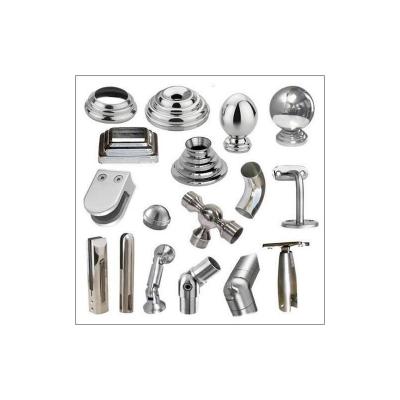How to Deal with Stainless Steel Blistering
With the rapid development of economic development, over the years our country has introduced many large and medium-sized chemical devices, most of these imported devices are using European and American technology, its stainless steel pipe fittings, most of which are used in the United States ASTM, API standards, German DIN standards, British BS standards, etc. At present, a considerable number of domestic fittings factory can produce these corresponding standards of fittings, which is also with the needs of the market This is also the result of the introduction of new technologies. With the development and growth of the valve four into, China's traditional way of quotation is slowly changing, getting closer to the international standard of quotation
Since stainless steel has many of the desirable properties required for construction materials, it can be said to be unique among metals, and its development continues. To make stainless steel perform better in traditional applications, improvements have been made to existing types and, to meet the stringent requirements of advanced architectural applications, new stainless steels are being developed. Due to increasing production efficiency and improving quality, stainless steel has become one of the most cost effective materials chosen by architects.
Conveying hot water pipe, serpentine bend and boiler water-cooled wall pipe, etc., due to flame erosion tube wall, uneven heating, improper operational measures and water freezing and expansion, etc., prompting the wall of the tube to occur local blistering problems, should try to repair.
(1) with curved pressure mold leveling
Pipe wall did not break, blistering problem is not serious, pipe diameter is not large, can be repaired by pressing die (forging tools).
First with wooden plugs, grass rope and rags and other things to seal the mouth of the tube to prevent the flow of air inside the tube and extend the time as hot, the tube into a semicircle (radius and tube radius slightly the same) tire tool, blistered parts facing up, with a gas torch will be heated to red blistered parts, and then put on the pressure die (radius and tube radius the same), with a hand hammer hit the top of the pressure die, while hitting while turning the tube, blistered parts will be pressed back into place. This is due to the tube is sandwiched between the tire tool and the pressure mold, to force all the blistered parts of the recovery.
(2) Rolling the tube
This method is suitable for tubes with small diameter, short length and good straightness.
First, the blistered parts are heated to red, and then two pieces of steel rebel (with appropriate weight) - on the next will be sandwiched in the middle, hands holding the two corners of the upper steel plate dragged back and forth, the tube under the plate will follow the rolling, blistered places are also "rolled" back to the original place. This action is like a kanji kneading twist strips, up and down the pressure plate like hands, the tube is equal to the twist strips, hands have the appropriate pressure to knead the twist strips more and more fine. Although the tube can not be rolled thin, but the blistered place (is red) will never exist.


